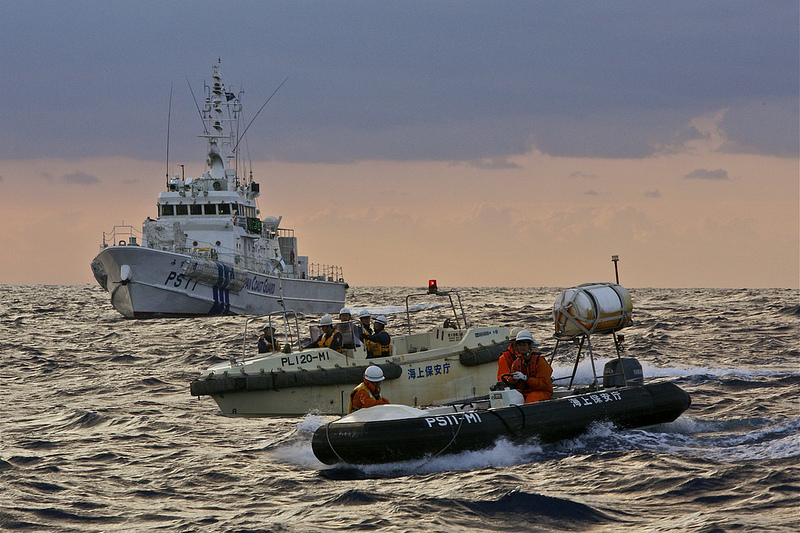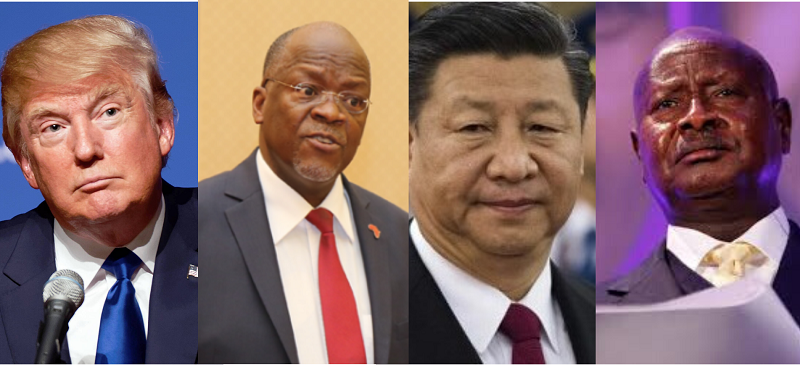“A territorial dispute is raging over the Diaoyu Islands"
July 8 There has been a territorial dispute between China and Japan over the Diaoyu Islands for decades, writes Osmi Anannya, 25, Commonwealth Correspondent from Dhaka, Bangladesh. She argues that historical evidence shows that China is true owner of the Islands.
There has been a territorial dispute between China and Japan over the Diaoyu Islands for decades, writes Osmi Anannya, 25, Commonwealth Correspondent from Dhaka, Bangladesh. She argues that historical evidence shows that China is true owner of the Islands.
A territorial dispute has been raging for decades over the Diaoyu islands, as they are known in China, between Japan and China.
The archipelago has been controlled by Japan since 1895, apart from a brief stint of U.S. administration from 1945 to 1952.
Since they were handed over to Japan in 1971 by the United States, China has both disputed and exerted claims on the islands. It claims that the Diaoyu Islands have been part of Chinese territory since ancient times, serving as important fishing grounds administered by Taiwan. The Ministry of Foreign Affairs went so far as to state that the claims are historically accurate and legally well-founded.
Ties between the two countries have been strained many times over the issue of the eight uninhabited islands and rocks which lie in the East China Sea. The islands encompass an area of about seven sq km and lie east of the Chinese mainland and southwest of Japan’s southern-most prefecture, Okinawa. The Diaoyu Islands are close to strategically important shipping lanes and are supposed to contain oil resources, as well as offering rich fishing grounds.
Japan controls the islands at the present, stating that it surveyed the islands for ten years and determined that they were uninhabited. On 14 January 1895, it erected a sovereignty marker, formally incorporating the islands into Japanese territory. After the end of the Second World War, Japan renounced claims to a number of territories and islands, such as Taiwan and the islands in the Treaty of San Francisco (1951), and the islands were then placed under U.S. trusteeship. They were eventually returned to Japan once more in 1971, under the Okinawa reversion deal.
According to Japan, China did not object to the San Francisco deal, and only since the 1970s, when oil resources in the region emerged did the Chinese authorities start to press their claims. In the Treaty of Shimonoseki (1895), Taiwan surrendered to Japan after the Sino-Japanese War.
The Chinese, on the other hand, legitimise their claims by pointing towards documentary evidence which existed before the first Sino-Japanese War. The evidence demonstrates Chinese possession of the territory. It classifies Japanese occupation of the islands as a seizure which should be returned just as the rest of Imperial Japan’s conquests were returned in 1945.
Beijing has also responded to Japan’s query about not pressing claims on the islands during the time of its handover, stating that the President of the Republic of China at the time, the Kuomitang leader, Chiang Kai-Shek, did not speak about the issue because he depended on the U.S. for support. The islands are included within the Treaty of Mutual Cooperation and Security between the United States and Japan, meaning that a defence of the islands by Japan would require the United States to come to Japan’s aid.
Previous incidents over the Diaoyu islands include: Chinese activists sailing to the islands many times since a Japanese group installed a lighthouse on one of the islands in 1996, confrontations between Japanese patrol boats and Chinese vessels, protests against the Japanese in numerous cities in China, and the cancellation of a visit by 1000 Japanese students to the Shanghai Expo.
The territorial dispute over the Diaoyu Islands is one of the most politically and emotionally sensitive conflicts between China and Japan since the end of the Second World War. During each crisis over the years, the government of the time for both countries has tried to keep the islands dispute on a low-profile to prevent wider political relations from deteriorating.
The majority of the Chinese public believe that the Diaoyu Islands are without a doubt Chinese territory and furthermore, they attach great emotional sentiment to the issue. The Chinese have used the islands since the 14th Century as navigational reference points by imperial envoys en route the Ryukyu Kingdom, a military port of Chinese naval forces and an operational base by fishermen from Taiwan.
The Japanese, by stark contrast, only began use of the islands from the 19th Century, when a Japanese civilian, Koga Tatsuhiro, began to use four of the islands for the family business of collecting albatross feathers and other marine products.
Historically, China’s claims are reasonably justified because the islands did belong to the country since the late 1300s; the islands acted as China’s frontier off-shore defence against wokou (Japanese pirates) during the Ming and Qing dynasties (1368 – 1911). Furthermore, the idea that the only other prominent barrier which exists in the handover is the unopposed stance that Chiang Kai-Shek demonstrated on the issue at the time is rather bewildering.
There have been several early recordings in maps and travelogues proving that the islands belonged to Chinese ownership at one time. There has also been a Chinese map charted of Asia, as well as a map put together by a Japanese cartographer in the 18th century showing the islands as a part of China. Besides, the Potsdam Declaration clearly outlines that Japanese sovereignty was to be only limited to the islands of Honshū, Hokkaidō, Kyūshū, Shikoku and such minor islands, as was determined by the victors of the Second World War who met at Potsdam; Japan accepted the terms of this declaration when it surrendered.
………………………………………………………………………………………………………………
About me:
I’m from Dhaka, Bangladesh, presently studying abroad in my second year as an undergraduate student in Computer Science under Northumbria University.
I’m a Junior Researcher at Pollinet, a regular blog writer and passionate about British and European politics. I am a Columnist for The New Federalist, Voices of the 7 Billion, and Shifting Grounds, and a STEMNet and IMechE Ambassador.
…………………………………………………………………………………………………………………
Opinions expressed in this article are those of the author and do not necessarily represent the views of the Commonwealth Youth Programme. Articles are published in a spirit of dialogue, respect and understanding. If you disagree, why not submit a response?
To learn more about becoming a Commonwealth Correspondent please visit: http://www.yourcommonwealth.org/submit-articles/commonwealthcorrespondents/
…………………………………………………………………………………………………………………
photo credit: Al Jazeera English via photopin cc




